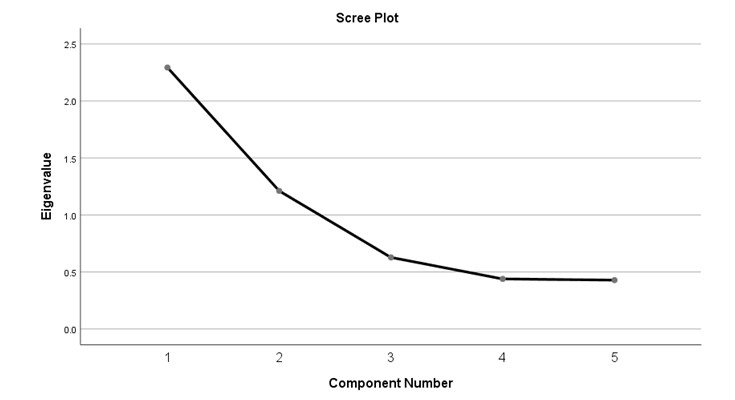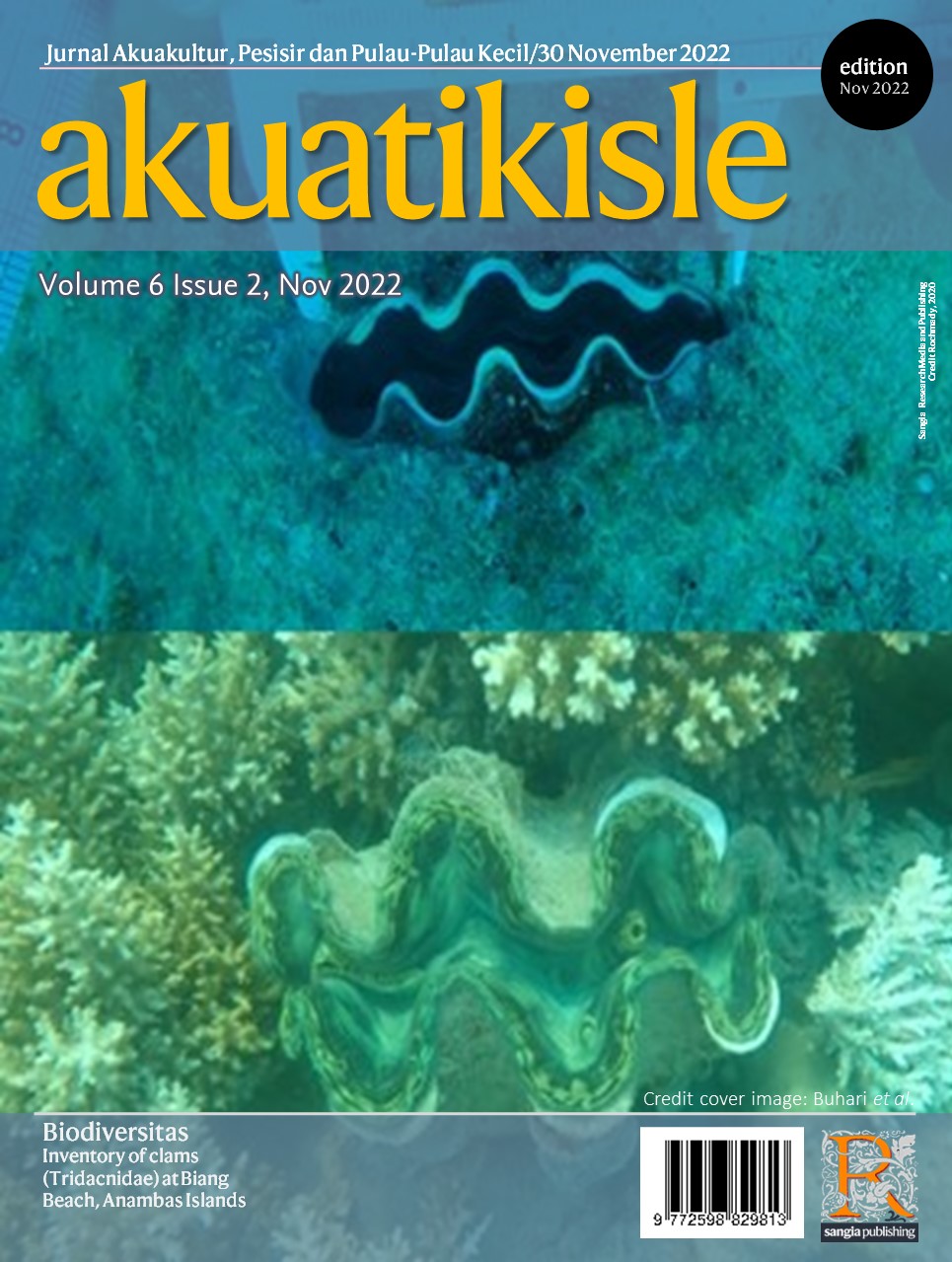Akuatikisle: Jurnal Akuakultur, Pesisir dan Pulau-Pulau Kecil
Full Length Article
Analysis of the role of fisherwomen from TPI Untia Makassar City in sustainable fisheries development
Highlights
Generate NLP AI by Wizdam ID.
Abstract
The role of women in the fisheries sector is often neglected, even though women in coastal areas and fishery areas, such as ponds and TPI, almost dominate. The purpose of this study was to analyze the role of fisherwomen in TPI Untia Makassar City in the development of sustainable fisheries. The research was conducted from September to October 2021, in the community of fisherwomen at TPI Untia, Makassar City. The type of data collected in this study is primary data. The method used to collect or obtain data is a survey method with interview techniques. The sampling technique used is the purposive sampling technique. The results of the factor analysis showed that the five variables studied to describe the role of fisherwomen from TPI Untia Makassar City in the development of sustainable fisheries were declared feasible and valid with a correlation value of 0.735. The five variables are divided into 2 factors (components), namely; factor 1, which includes; variable economic role, social role, and domestic role. While factor 2 which includes; participatory and institutional variables.
Keywords
Introduction
Section snippets
Material and Methods
Materials and methods from the full-text PDF of this article cannot be displayed.
Results
Results from the full-text PDF of this article cannot be displayed.
Discussion
Discussion from the full-text PDF of this article cannot be displayed.
Conclusions
Conclusions from the full-text PDF of this article cannot be displayed.
Acknowledgment
Acknowledgment from the full-text PDF of this article cannot be displayed.
Competing interest
The authors declare that they have no known competing financial interests or personal relationships that could have appeared to influence the work reported in this paper.
Conflict of interest
The authors declare that the research was conducted in the absence of any commercial or financial relationships that could be construed as a potential conflict of interest.
Ethical approval acknowledgements
No ethical approval required for this article. All procedures followed were in accordance with the ethical standards of the responsible committee on human experimentation (institutional and national) and with the Helsinki Declaration of 1975, as revised in 2008 (5)
Supplementary files
Data sharing not applicable to this article as no datasets were generated or analysed during the current study, and/or contains supplementary material, which is available to authorized users.
References (1)
Child, Dennis. 2006. The Essentials of Factor Analysis (edisi ke-3rd, Continuum International, ISBN 978-0-8264-8000-2.
Fabrigar, L.R.; Wegener, D.T.; MacCallum, R.C.; Strahan, E.J. 1999. Evaluating the use of exploratory factor analysis in psychological research. Psychological Methods. 4 (3): 272–299. doi:10.1037/1082-989X.4.3.272.
Gozhali, Imam, 2011. Aplikasi Analisis Multivariate dengan Program IBM SPSS 19. Edisi Kelima. Semarang: Badan Penerbit Universitas Diponegoro.
Jennrich, Robert I., 2006. Rotation to Simple Loadings Using Component Loss Function: The Oblique Case," Psychometrika, Vol. 71, No. 1, pp. 173–191.
Mantjoro, E. 2014. Ekonomi Sumberdaya Perikanan. Fakultas Perikanan dan Ilmu Kelautan. Universitas Sam Ratulangi. Manado.
Mulaik, S. A. 2010. Foundations of Factor Analysis, Chapman & Hall.
Roscoe, J. T. 1975. Fundamental research statistics for the behavioural sciences. (2nd ed.) New York: Holt Rinehart & Winston.
Sekaran, Uma. 2006. Metodologi Penelitian untuk Bisnis. Edisi 4. Salemba Empat, Jakarta.
Sugiyono. 2008. Metode Penelitian Kuantitatif Kualitatif dan R&D. Bandung : ALFABETA.
Thompson, B. 2004. Exploratory and Confirmatory Factor Analysis: Understanding concepts and applications, Washington DC: American Psychological Association.
Yusuf, M., Daris, L. 2018. Analysis of Research Data; Theory & Application in Fisheries. PT. IPB Press. Bogor.
Bibliographic Information
Cite this article as:
-
Submitted
10 October 2022 -
Revised
13 November 2022 -
Accepted
15 November 2022 -
Published
17 November 2022 -
Version of record
26 May 2023 -
Issue date
30 November 2022
-
Academic subject
Social Fisheries Science;
Copyright
Sangia Advertisement
Copyright © 2022 Muh Yusran, Hasbi, Sakaria, Muhammad Sabiq. Sangia Research Media and Publishing. Production and hosting by Sangia (SRM™).  This work is licensed under a Creative Commons Attribution-ShareAlike 4.0 International License.
This work is licensed under a Creative Commons Attribution-ShareAlike 4.0 International License.
Disclaimer: All claims expressed in this article are solely those of the authors and do not necessarily represent those of their affiliated organizations, or those of the publisher, the editors and the reviewers. Any product that may be evaluated in this article or claim that may be made by its manufacturer is not guaranteed or endorsed by the publisher.
Comments on this article
By submitting a comment you agree to abide by our Terms and Community Guidelines. If you find something abusive or that does not comply with our terms or guidelines please flag it as inappropriate.









